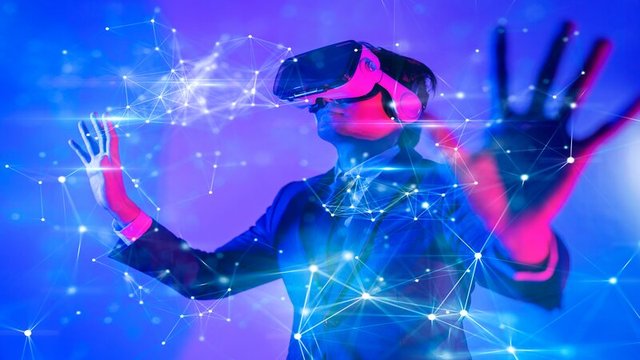

Augmented Reality (AR) is a rapidly evolving technology that is transforming industries, particularly gaming. But what is augmented reality, and why is it such a game-changer?
If you are considering a degree in games design, understanding AR is essential, as it plays an increasingly significant role in the future of interactive entertainment.
Definition of augmented reality
Augmented Reality (AR) is a technology that enhances the real world by overlaying digital elements such as images, sounds, and other sensory enhancements onto a live view.
Unlike Virtual Reality (VR), which immerses users in a completely digital environment, AR integrates digital content into the real-world setting, providing a seamless blend of physical and virtual experiences.
AR technology is widely used in gaming, education, retail, and even healthcare. The popularity of AR-based mobile games, such as Pokémon GO, has demonstrated the immense potential of AR in engaging users and creating immersive experiences. For aspiring games designers, AR offers exciting opportunities to develop interactive and dynamic games that push creative boundaries.
What does augmented reality look like?
So, what does augmented reality look like? AR can take various forms depending on the device used to experience it. Here are some common examples:
- Mobile AR: Many AR applications are designed for smartphones and tablets, using the device’s camera to overlay digital objects on real-world scenes. Games like Pokémon GO and apps such as IKEA Place, which allows users to visualise furniture in their home, are prime examples.
- Wearable AR: Devices like Microsoft HoloLens and Magic Leap offer AR experiences through headsets or smart glasses, displaying 3D digital elements that interact with the real world.
- Projection-Based AR: This form of AR projects digital imagery onto physical surfaces, enabling users to interact with the projected content without a screen.
- Mixed Reality (MR): A blend of AR and VR, mixed reality allows digital elements to interact with real-world objects, creating a more immersive experience.
For those studying games design, learning how to create and integrate AR elements into game mechanics is crucial for staying ahead in an industry that thrives on innovation.
The role of augmented reality in games design
The gaming industry is increasingly adopting AR technology to enhance user experiences. AR introduces new ways for players to engage with digital content, blurring the lines between the virtual and physical worlds. Here are some key ways AR is influencing games design:
- Immersive Gameplay: AR enables players to interact with digital elements in their own environment, creating a more engaging and personalised experience.
- Real-World Interaction: Games designers can develop AR games that encourage players to explore real-world locations, fostering a more interactive and dynamic form of play.
- Social and Multiplayer Features: AR technology enhances social gaming experiences by allowing players to collaborate or compete in shared augmented environments.
- Innovative Storytelling: AR offers new storytelling possibilities, where narratives can unfold within a player’s surroundings, adding a layer of depth to game design.
As AR technology continues to advance, its applications in games design will expand, offering endless creative opportunities for developers and designers.
Why study games design at Universidad Europea?
If you are passionate about game development and want to specialise in emerging technologies like AR, choosing the right university is crucial. Universidad Europea offers a cutting-edge degree in games design that equips students with the skills and knowledge needed to excel in this dynamic industry.
Key benefits of studying at Universidad Europea:
- Industry-Relevant Curriculum: The programme covers essential aspects of game development, including AR and VR design, programming, storytelling, and interactive media.
- State-of-the-Art Facilities: Students have access to advanced labs, AR/VR equipment, and the latest software to experiment with game mechanics and immersive technologies.
- Expert Faculty: Learn from industry professionals with experience in game development, animation, and AR technology.
- Hands-On Learning: The university emphasises practical experience, allowing students to work on real-world projects, develop portfolios, and gain valuable industry exposure.
- Career Support: Universidad Europea provides career guidance, internship opportunities, and networking events to help graduates secure positions in top gaming companies.
By studying any of our degree or masters in games design at Universidad Europea, you will gain the expertise and practical experience necessary to develop AR-driven games and stand out in the competitive gaming industry.
Launch your career in AR games design
With AR continuing to shape the future of gaming, there has never been a better time to pursue a degree in games design. Whether you aspire to develop innovative AR games, create immersive experiences, or push the boundaries of interactive storytelling, studying at Universidad Europea can be the first step towards a successful career in the industry.
So, what is augmented reality? It is the future of gaming, and by mastering it, you can become a leading force in game design innovation.